Herbert Ross

Director • Choreographer • Producer • Actor
Birth Date: May 13, 1927
Death Date: October 9, 2001 — 74 years old
Birth Place: Brooklyn, New York
Spouses: Lee Radziwill
Choreographer-director-producer Herbert Ross was best known for elevating the role of dance in film and for his ability to elicit exceptional performances out of such leading ladies as Barbara Streisand, Shirley MacLaine, Anne Bancroft and Julia Roberts. Receiving his start as a Broadway performer and choreographer with the American Ballet Theater, Ross later staged dozens of musical sequences for such films as "Carmen Jones" (1954).
Although he was one of Broadway's top choreographers - notably crafting Streisand's show-stopping number in 1963's "I Can Get It for You Wholesale" - Ross yearned to direct films, a goal he achieved with "Goodbye, Mr. Chips" (1969). He began to hit his stride as a director alongside rising megastars like Streisand in "The Owl and the Pussycat" (1970) and Woody Allen in "Play it Again, Sam" (1972). shortly thereafter, he began his prolific working relationship with playwright Neil Simon on "The Sunshine Boys" (1975).
At the height of his career, Ross utilized his knowledge of ballet for "The Turning Point" (1977) and reteamed with Simon on "The Goodbye Girl" (1977) to win both critical acclaim and box office gold. Less successful were risky endeavors like the Depression-era Steve Martin musical-fantasy "Pennies from Heaven" (1981). Ross still had a few more cards up his sleeve, though, as the hits "Footloose" (1984) and "Steel Magnolias" (1989) triumphantly capped off a remarkable career.
Born Herbert David Ross on May 13, 1927 in Brooklyn, NY, he was the son of Louis Chester Ross, a postal clerk, and Martha Ross. Ross lost his mother when he was just nine years old, a tragedy that prompted his newly-widowed father to relocate to Florida shortly afterward. even as a young boy, Ross found solace and freedom in performing for the public. during summer break from his Miami high school, he told his father that he would be staying with friends in New York City, only to surreptitiously travel with a theater company and tour the South. upon his return home, the emboldened teen informed his father that he was dropping out of school to pursue a theater career.
A heated argument ensued, followed by the younger Ross' departure. Tragically, his father died of a heart attack later that night. Returning to New York, Ross supported himself with a series of odd jobs and modeling work until a friend invited him to attend a performance by the renowned Ballet Russe. Transfixed by what he saw on stage that night, he immediately set his sights on becoming a dancer.
In the mid-1940s, Ross began his career as a dancer in several Broadway musicals, including "Something for the Boys" and "Laffing Room Only." After creating his own ballet production, "Caprichos" - inspired by the paintings of Goya - in 1950, Ross began his professional career as a choreographer with the American Ballet Theatre. the following year, he choreographed his first Broadway show with the production of "A Tree Grows in Brooklyn" and continued to create memorable ballets, among them an all-male version of Jean Genet's "The Maids."
In 1954, the in-demand Ross choreographed the musical sequences for the Broadway production of "House of Flowers" after providing similar duties on his first film, Oscar Hammerstein's African-American rendition of Bizet's classic opera, "Carmen Jones" (1954), starring Harry Belafonte and Dorothy Dandridge.
Ross made his first tentative steps toward directing for the screen with the made-for-TV movie, "Wonderful Town" (CBS, 1958), starring Rosalind Russell in a role she had originated on Broadway. The following year, Ross married prima ballerina Nora Kaye, who had coincidentally turned down the lead role in his "Caprichos" ballet several years earlier. among other notable endeavors of the period, he staged the musical numbers for the Broadway smash hit "I Can Get It for You Wholesale" in 1963, the production often credited with making a star of a young Barbara Streisand. in the years to come, Ross and Streisand would work together several more times.
Back in film, he provided choreography for such movies as U.K. director Peter Yates' musical-romance "Summer Holiday" (1963), prior to a dismal attempt at directing his first Broadway production, "Kelly," which closed after a single performance in 1965.
The turning point came when a sudden twist of fate led to Ross making his debut as a feature film director with "Goodbye, Mr. Chips" (1969), a musical remake of the 1939 classic. The warm reception to that film set his career as a movie director in motion, and soon producer Ray Stark - with whom he would work closely many more times - tapped Ross to direct the comedy, "The Owl and the Pussycat" (1970), starring Streisand in her first non-singing role. He hit his stride in the '70s with the delirious Woody Allen vehicle "Play It Again, Sam" (1972) - a Bogart homage based on Allen's play of the same title.
Ross then deftly executed the wit contained in the Anthony Perkins-Stephen Sondheim script for the mystery, "The Last of Sheila" (1973). The cleverly-plotted whodunit - boasting a cast that included James Coburn, James Mason, Raquel Welch and Dyan Cannon - also marked Ross' debut as a feature film producer, a role he maintained for nearly all of the subsequent pictures he would helm.
Ross went on to direct Streisand once more in "Funny Lady" (1975), in which she reprised the role of comedian Fanny Brice, whom she had portrayed in 1968's "Funny Girl" as well as the earlier Broadway sensation of the same name. He later began what would be a string of five film (and two stage) collaborations with writer Neil Simon, with the screen adaptation of Simon's play "The Sunshine Boys" (1975), starring George Burns and Walter Matthau as a pair of bickering, retired vaudevillians. Ross garnered some of the best critical notices of his career for the Sherlock Holmes pastiche "The Seven Per-Cent Solution" (1976), in which the great detective (Nicol Williamson) matches wits with Sigmund Freud (Alan Arkin) as he attempts to cure Holmes of his addiction to cocaine.
Ross reached his creative high watermark the following year with a pair of films that would elevate him to elite director status in a one-two punch of critical and commercial success. Acting as co-producer, along with wife Nora Kaye and screenwriter Arthur Laurents, Ross returned to his roots in ballet with "The Turning Point" (1977), the story of two old friends and competitors in the world of dance (Shirley MacLaine and Anne Bancroft) who battle and bond over the affections of MacLaine's daughter. That same year he directed another Neil Simon offering, the box office hit "The Goodbye Girl" (1977).
A romantic comedy about an unlucky-in-love single mother (Marsha Mason) and a neurotic struggling actor (Richard Dreyfuss), it charmed audiences as its titular theme song spent weeks on the radio charts. Combined, the two films earned a total of 16 nominations at that year's Academy Awards ceremony, including one for Ross as Best Director for "Turning Point," which, shockingly, failed to win any of the 11 awards it had been nominated for. Dreyfuss, however, wound up taking home the Best Actor Oscar for his role, while three of the five Best Actress nominees (MacLaine, Bancroft and Mason) were from Ross' two films.
Although Ross' output over the years that followed would not maintain that same level of brilliance and profitability, there were a few notable exceptions yet to come. Another Ross-Simon collaboration, "California Suite" (1978), was a star-studded, lightweight romantic comedy featuring such big names as Jane Fonda, Michael Caine, Walter Matthau, Bill Cosby and Maggie Smith. two years later, he and Kaye, acting as producer, parlayed his earlier successes into the ambitious biopic "Nijinsky" (1980), the story of the legendary Russian dancer (George De La Peña) and his gradual descent into madness. Ross took an even bigger gamble with "Pennies from Heaven" (1981), a lavish musical fantasy starring Steve Martin and Bernadette Peters as star-crossed lovers desperate for love and happiness in Depression-era Chicago.
Despite being well-received by the majority of critics, the unconventional narrative combined with Martin's against-type casting left audiences puzzled and the film at the bottom of the box office. following two more efforts with Simon - the unremarkable "I Ought to Be in Pictures" (1982) and "Max Dugan Returns" (1983) - Ross bounced back with yet another dance-themed project, "Footloose" (1984). Set in a small town where dancing is forbidden, the film made lead actor Kevin Bacon a star overnight, boasted a chart-topping soundtrack, and gave Ross his biggest commercial success in years. he returned a few years later with the popular Michael J. Fox comedy "The Secret of My Succe$s" (1987), a hit that only barely offset the vitriol directed at "Dancers" (1987).
Another drama set in the world of ballet, "Dancers" starred Mikhail Baryshnikov and was dubbed one of the worst movies of the year by critic Roger Ebert. Far more devastating than any negative review, however, was the death of Ross' beloved wife, business partner and creative muse, Nora Kaye, who succumbed to cancer that year. Ross enjoyed yet another triumph with "Steel Magnolias" (1989), a heartfelt ensemble drama starring Sally Field, Shirley MacLaine, Dolly Parton, Olympia Dukakis, Daryl Hannah and Julia Roberts. the film, credited with jump-starting Roberts' fledgling career, further cemented Ross' reputation as a director keenly attuned to female performers.
His later directorial efforts included the largely overlooked films "My Blue Heaven" (1990), "True Colors" (1991) and "Undercover Blues" (1993). Ross displayed his facility with strong leading ladies one last time with his final feature, "Boys on the Side" (1995), a road trip melodrama starring Whoopi Goldberg, Mary-Louise Parker and Drew Barrymore. Though he had begun production on a made-for-television remake of "The Magnificent Ambersons" (A&E, 2002), Ross' increasingly poor health forced him to drop out of the project soon after it had begun production.
In early 2001, the ailing filmmaker divorced his second wife, socialite Lee Radziwill, the younger sister of Jacqueline Kennedy, who he had married in 1988. Ross died of heart failure on Oct. 9, 2001 in New York and, as per his wishes, was interred next to Kaye. he was 74 years old.
By Bryce Coleman
Credits

Poster Boy

Boys on the Side

Boys on the Side

Undercover Blues

Undercover Blues

True Colors

True Colors

SoapdishStream
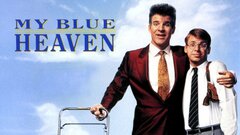
My Blue HeavenStream
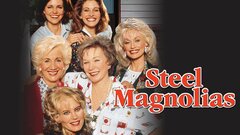
Steel MagnoliasStream

La Leyenda de Giselle

Dancers
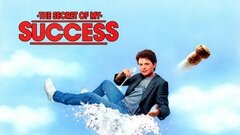
The Secret of My SuccessStream

The Secret of My SuccessStream

FootlooseStream

ProtocolStream
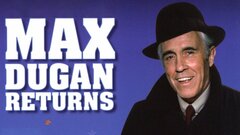
Max Dugan ReturnsStream

Max Dugan ReturnsStream

I Ought to Be in Pictures

I Ought to Be in Pictures
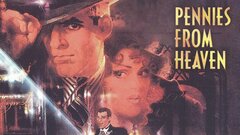
Pennies from HeavenStream

Pennies from HeavenStream

Nijinsky

California Suite
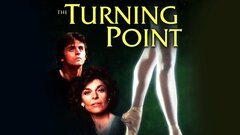
The Turning Point

The Turning Point
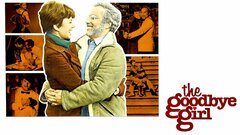
The Goodbye GirlStream

Sherlock Holmes attaque l'Orient-Express

The Seven-Per-Cent Solution

The Seven-Per-Cent Solution
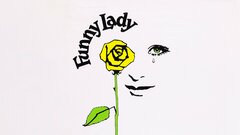
Funny LadyStream

The Sunshine BoysStream

The Last of SheilaStream

The Last of SheilaStream
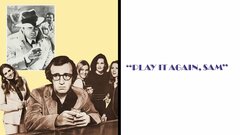
Play It Again, SamStream

T.R. Baskin

The Owl and the Pussycat

Goodbye, Mr. ChipsStream

Pontiac Star Parade: Four for Tonight


















